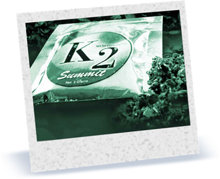Read: Synthetic Marijuana: A Short History
SYNTHETIC MARIJUANA: A SHORT HISTORY
Synthetic marijuana, sold as “Spice,” first appeared in Europe in 2004 and in the U.S. in 2008. Chemicals used to make synthetic marijuana, however, were created for experimental purposes decades ago. These include:
- CP 47,497, named after Charles Pfizer of Pfizer Pharmaceuticals, developed in the 1980s for scientific research.
- HU-210, named after Hebrew University of Jerusalem where it was first developed in 1988. It is 100 to 800 times more potent than natural THC (the mind-altering ingredient in marijuana).5
- JWH-018 and others in the JWH series, named after Prof. John W. Huffman of Clemson University in South Carolina, created in 1995.
In 2010, the U.S. Drug Enforcement Administration used emergency powers to control these chemicals, and in 2012 a law was passed banning the substances found in synthetic marijuana.
Underground chemists then developed new experimental drugs, UR-144 and XLR11, that mimic the effects of marijuana, to replace those that had been banned. In 2013, UR-144 and XLR11 were made illegal, but by that time a new generation of synthetic marijuana had surfaced. The point is not whether these drugs are illegal. Studies show they are toxic and unsafe.
There are more than a hundred different varieties of synthetic “marijuana” that have been created so far. Because the chemical content is constantly changing, buyers never know what effects the drugs will have on the body.6


